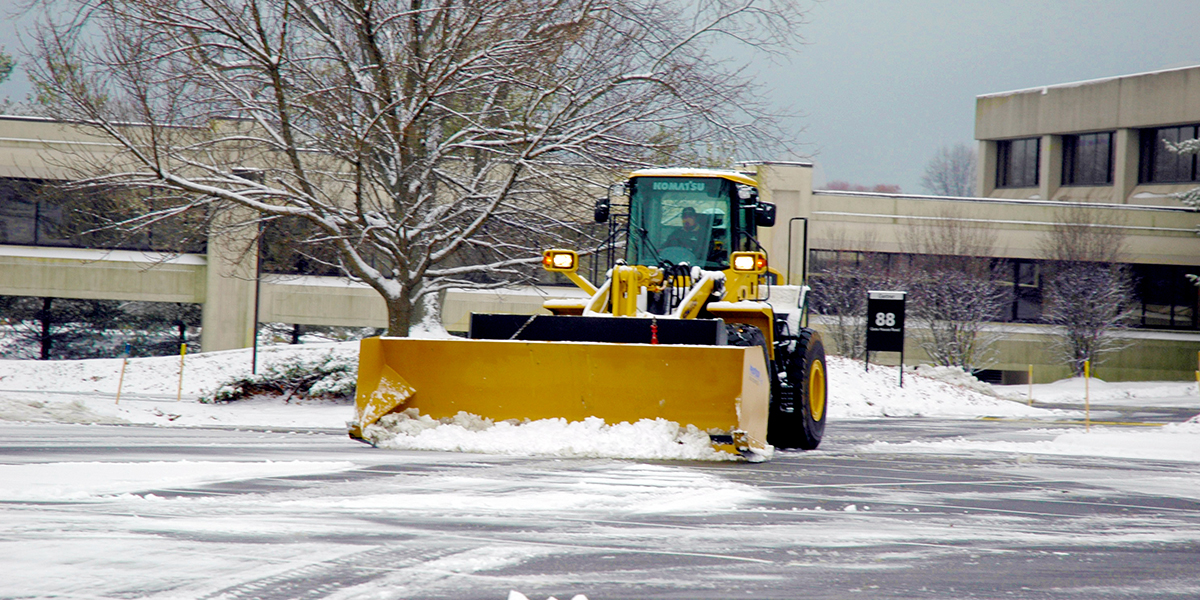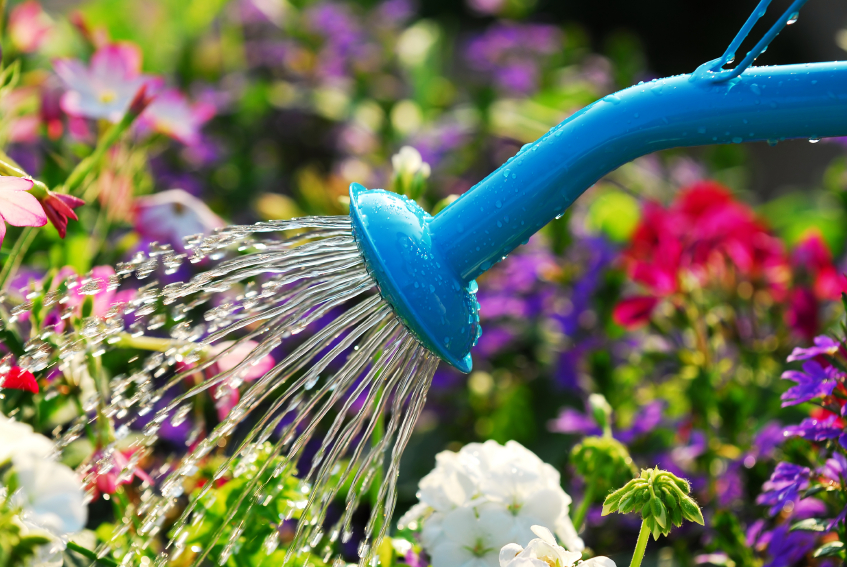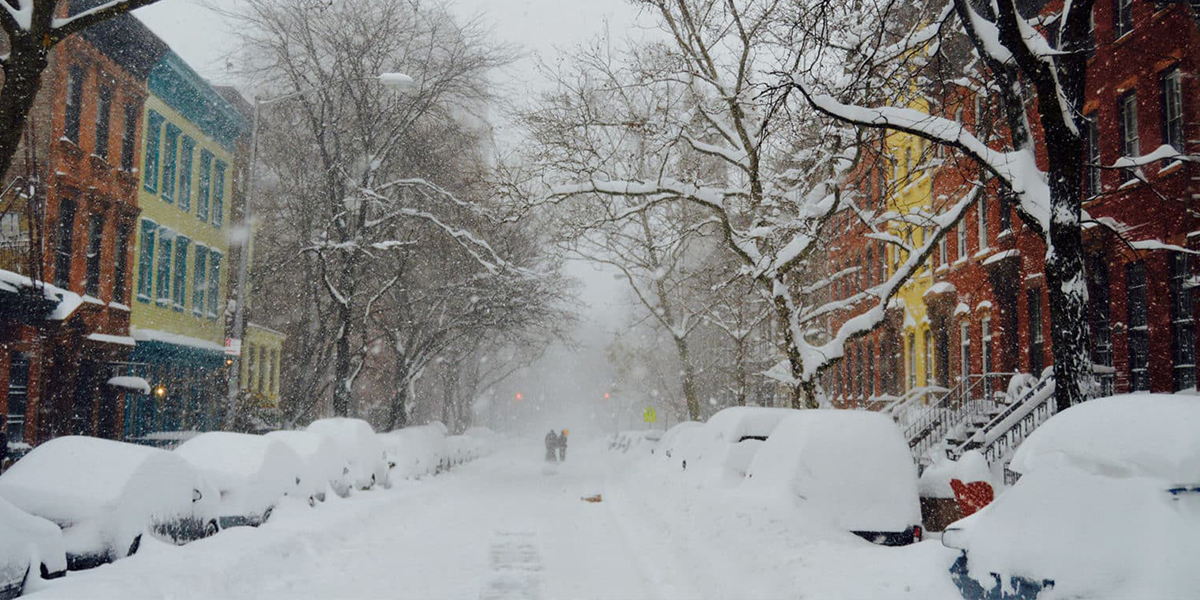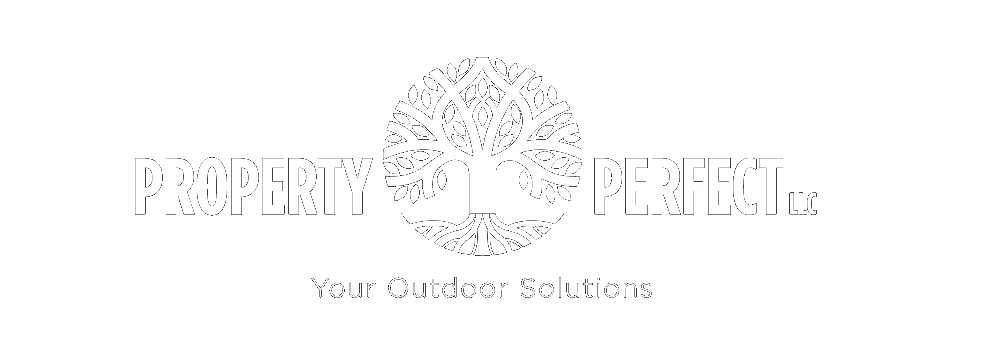- On 1 June 2024
The Power of Perception: 15 Ways Commercial Landscaping Benefits Your Business
Perception matters, from the moment customers land on your business website to the first time a potential client turns their head toward your brick-and-mortar location. That cliché saying about first impressions is as true for companies as it is for individuals.
Hardly anyone can deny the importance of visual appeal and aesthetics. Humans are visual creatures, and we tend to form first impressions quickly.
We strive for better appearance in nearly all aspects of life, including grooming and clothes as well as homes and businesses. Hollywood stars have procedures, real-estate professionals obsess about the drive-up appeal, and pretty much everyone somehow improves their appearance from their waking state before going out into the world.
In an ultra-competitive business climate with thin profit margins, small and large companies alike can use all possible advantages. Property Perfect recognizes the value of landscaping because we specialize in creating beautiful settings that people perceive well and that make stellar first impressions. We offer expertise in all aspects of both welcoming design and effective horticulture, and we’re eager to share how commercial landscaping can help business.
What Is Commercial Landscaping?
A landscape might include trees, shrubs, grass, native plants, rocks, bricks, retaining walls, pathways, courtyards, rain gardens, filtration elements, lighting, irrigation systems, water features, patios, furniture and more. The environment is only limited by the imagination of its designer.
A professional master plan is usually the first step in creating a great indoor or outdoor space. Sit with a professional who can assess the site, analyze the sunlight and soil, and help you narrow down the choices of color, texture, shape and other characteristics.
Who Needs Commercial Landscaping?
Anyone with a place of business that sees people can benefit from landscaping. The rule of first impressions applies to absolutely every kind of business including:
Offices small and large, corporate and casual
Retail stores of all kinds
Homeowners’ associations
Multi-family living complexes
City/county/state/federal facilities such as government buildings and schools
Institutions of higher learning such as a tech school, community college or university
Houses of worship for all denominations
Manufacturing plants
Industrial businesses
Non-profit organizations
Clubs and associations
Boat marinas
Banks
Private-practice professionals
Restaurants
Hotels, resorts and other hospitality places
No business is exempt from the rules of decent aesthetics and environmental stewardship. At least, that’s likely to be most people’s opinion. Think about horror movies and all the special effects used to create that creepy feeling. It usually involves weedy, overgrown places with peeling paint, bad lighting and sad-looking plants.
A tastefully designed and well-maintained landscape creates the opposite — a positive impression that exudes good energy. While it requires an investment to have professionally placed and maintained landscape elements, the overall effect is proven to generate many benefits for any business. So, how does commercial landscaping benefit business? Property Perfect knows of many ways but offers some insight on the 15 noted most often, which every owner or manager would probably prioritize differently:
Landscaping Creates Economic Advantage
Economic advantage results from commercial landscaping because people spend more at businesses they perceive are good.
Studies have shown that people spend more money at a business that’s nice, neat and well-kept. They perceive it as a signal of efficiency and a caring approach to business. The effect of landscaping on business is broad, diverse and positive if strategically planned and well maintained. In fact, most people can achieve some objectives along with the benefits.
How Commercial Landscaping Benefits Your Business
Many types of landscaping can be designed to provide insulation and a snow screen during winter and cooling effects with shade during the summer. For example, well-placed trees and other elements to shade can help the cooling system operate 2 to 4 percent more efficiently, which leads to lower energy bills and better protection from the weather for people entering and exiting the business, including you.
Landscaping Attracts and Retains Clients and Employees
You can use landscaping to bring in more customers and to keep employees happier because of the positive, psychological effects it offers. When we think about the ideal workplace or shop, such as those cultures in the news as well as movies and TV, we probably think of ones where there is an investment into the environment.
These happy atmospheres contain lots of windows and natural light, free snacks and beverages, break areas indoors and outdoors and a nice-looking building. Tech giants Google and Facebook are known for their high-end corporate campuses.
The attraction and retention claim comes from reams of studies that say people respond to positive environments. Natural light and design that features soothing colors, textures and patterns can actually create the basic psychology a company wants. Studies also show that employees who have plants around and a window naturally feel less pressure and tend to be more satisfied than employees who do not have access to those elements.
Nobody enjoys the thought of reporting to a dank, dark place with faded, old bricks and no color; overgrown weeds; and ratty carpet or buzzing lights, to name a few maladies. This is why the best and smartest companies work against making that impression and invest in outdoor spaces where clients and employees can enjoy a relaxing break, get fresh air and interact with nature and each other.
Stewardship Pays and Builds Loyalty
Responsible, well-planned landscaping builds in environmental stewardship because you can choose elements that are native, require little water and help filter the air and water. Going green isn’t a fad that’s going away, and already it is a status that people actively seek both indoors and outdoors. Natural prairie grasses, which don’t need to be mowed, evergreen and leafy trees, retaining walls, proper drainage and good water-runoff management are all ways to not only enhance the look of your business but also to send a message to those in the know, “We care about the Earth!”
How Commercial Landscaping Benefits Your Business
For example, one tree can remove 26 pounds of carbon dioxide from the air each year, which is comparable to saving the emissions of about 11,000 miles in a fuel-powered vehicle. People, including potential clients, employees and tenants, know these things and have respect for companies that use good practices and make an effort to do their part.
Plants Prevent Erosion and Protect Water Quality
As rain falls and water runs across the land, it carries more sediment away from places that have no plant roots to reinforce the soil, especially where there is a large or small natural waterway established. An old-but-true adage says, “Water will go its way,” but it’s beneficial to keep it from carrying away dirt. Erosion can have detrimental effects on buildings and property assets. Additionally, when plants keep soil in place, there is less of it to move around and fly into the air or run into the rivers. Plants, trees, shrubs and other landscape elements are effective ways to stabilize the soil.
Plants and their roots provide a filtration system to rainfall and the resulting water that runs off roofs, parking lots and roadways. Grass, trees, bushes and other plants filter dust and pollution out of the air, can lower the temperature in the concrete-dominant urban areas and help protect rivers, lakes and other water bodies by filtering out the particulate pollution that reaches them from developed areas.
Professional Maintenance Saves Time and Money
Hiring a comprehensive professional company such as Property Perfect to care for the outdoor spaces saves time and money plus it takes a load off you so that you can focus on your business. Good landscaping professionals will offer you all the services you might need for outdoor grounds work and most indoor green elements.
Some companies hesitate to invest in landscaping because of the maintenance it takes to cultivate trees, bushes, grass, prairie flowers, annual blooms and other plants. There’s proper spacing of the plants, soil matching and amendments, and a correct gauge of climate and sunlight. Most great landscapes also require fertilizer, periodic seeding, weed elimination and general trimming regularly.
For many time-starved business owners and managers, landscape maintenance seems like a far-off, unattainable concept. However, with the right professionals as a partner, any business can enhance its presence, image and overall appeal using well-designed and well-maintained landscape elements.
Professional Service Eliminates the Need to Own and Maintain Landscaping Equipment
When you consider all the tools necessary to do a nice job on the landscape, it adds up to a lot of money as well as the hassle of maintaining multiple, major tools. Depending on what the environment consists of, a business might need mowers, hedge trimmers, weed whackers, treatment-application equipment, tree trimmers, ladders, lift mechanisms, shovels and rakes.
A professional landscape company lets clients do away with the need to own this equipment and the associated expenses. Most companies admit that the professionals do a better and more efficient job than a maintenance person or someone else who doesn’t have specialized horticultural knowledge.
Landscaped Areas Create More Meeting and Living Space
Well-manicured outdoor areas create the opportunity for people to interact with nature during breaks and create a kind of natural meeting space and outdoor living area. You might invite a client to take a walk, or sit and talk there. The company would be able to hold yard-game days, barbecues and other activities right on company property and therefore save on event-venue bookings.
Indoor green space with trees and plants or even a water feature will not only enhance the look and feel of the indoor environment but will also clean it. Plants are known for their air-filtration quality, and that principle applies inside as well as outside.
Nature Can Help With Your Energy Bills
Not everyone realizes that properly planned and placed landscaping can actually help out the heating and cooling systems of the business. For example, the same statistic on homes is true for business buildings: Shade trees can help lower summer cooling bills by 25 percent, and other kinds of trees can create the perfect kind of wind block and snow barrier needed to keep things warmer in the structure during winter.
Outdoor Appeal Increases Property Value
Businesses and companies are not immune to the need for curb appeal during regular business or when selling. A sloppy or neglected landscape will work against the property value, while sharp landscaping proves a good investment. One study shows that quality landscaping yields a whopping return on investment with more than one dollar for every one invested.
Helps Establish a Brand and a Clean Image
Image is what comes after clients form that first impression, so the work to impress doesn’t end after the first visit. Your goal is always to keep people coming back. When customers and clients encounter a well-done landscape each time, it sends the signal that you’re detail-oriented and care about the look of the business.
If you pay attention, you’ll notice that the most image-conscious professionals — such as lawyers, accountants, doctors, politicians, etc — rarely office in a shabby place. The reason for this is that they know people’s perception is their reality. They know that people’s attitude towards your business is based on their perceptions of you. Clean landscaping is one of the best ways to control their perception of you.
Greenery Increases Tourism
Interestingly, studies show that spectacular landscaping is something folks will pay to be near. Examples include the Opryland Hotel in Knoxville, which has an elaborate, indoor jungle garden. Its occupancy rate runs unusually high at 85 percent, with the hotel netting about $7 million per year in additional revenue from guests willing to pay extra to overlook the green space. It’s one of the many forms of eco-tourism growing popular.
Pleasing Aesthetics Attract Attention
Inviting and soothing landscape elements will draw people into a business or district. Good landscaping will capture the positive attention of people walking and driving past a place. In a world of split-second actions and reactions, a good-looking place will attract vehicle and pedestrian traffic.
Improvement Begets Other Improvement
When one business in a district exerts effort to make its landscaping look nice, it is logical to think others will follow the example. Often, there are design standards in place anyway, so improving the landscape periodically and having it professionally maintained stays ahead of the standard and helps business owner avoid any awkward encounters with the city or business-district committees.
Gardens Cultivate Healthy Communities
Some landscapes might include flowering plants for every season so that there’s color throughout the year, as well as fruit trees and food plants. Bonds are created when people tend a garden together and then harvest and eat its food. Additionally, many rehabilitative places and programs use plants and trees as part of healing therapy.
Greenery Provides Privacy
Some businesses are situated in places where it’s beneficial to have some screening between the building and the street or an adjoining business. Plants and trees can do wonders in filtering out visible and audible pollution and creating an oasis for your business. Landscaping can create inviting spaces anywhere and can also serve the functional purposes of frame a patio or a parking lot to make it more attractive.
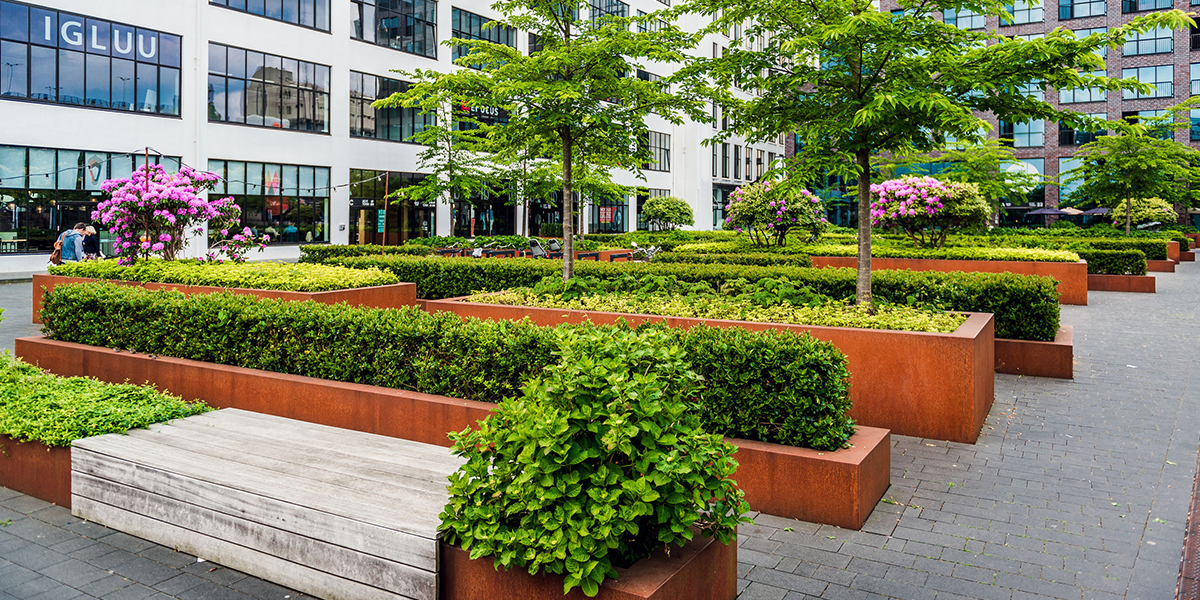
Call Property Perfect today at (651) 777-7530 to get the job done right! Contact Property Perfect!


